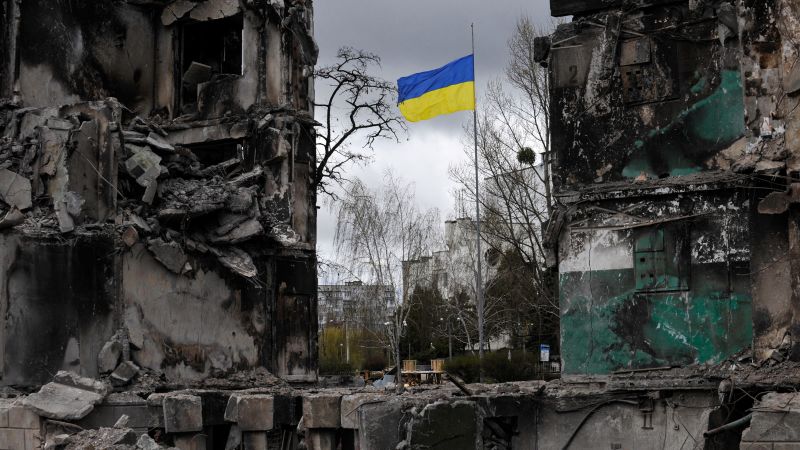Editor’s Note: Fareed Zakaria hosts Fareed Zakaria GPS, airing Sundays at 10 a.m. and 1 p.m. ET on CNN. The views expressed here are his own. Read more opinion at CNN.
CNN
—
One year into Russia’s naked aggression against Ukraine, it has become clear that neither side is strong enough to win the war nor weak enough to sue for peace. The conflict has settled into a stalemate. After making impressive gains, Ukraine’s armed forces have not made significant advances in months. Russia meanwhile has dug into the territories it occupies, and its further attacks are having little success so far.
The numbers tell the story. According to a Washington Post analysis, Russia occupied about 7% of Ukrainian territory when it launched its invasion in February 2022. It swept into eastern Ukraine, and in a month it was holding 22% of the country. Then came Ukrainian counter-offensives, which by mid-November had taken back about a third of those gains. In the last three months, nothing significant has changed. Ukraine and Russia are both planning new moves, but it would take massive victories to fundamentally change the situation. To put it another way, Ukraine would need to recover roughly twice as much territory as it was able to last year, just to get back the lands conquered since the 2022 invasion.
Russia’s performance in the war has been poor, but it is doing better, especially at holding territory. Russia has also been able to stabilize its economy, which the IMF projects will do better this year than the UK’s or Germany’s. Russia is trading freely with such economic behemoths as China, and India, as well as neighbors like Turkey and Iran. Because of these countries and many more, outside of the advanced technology sector, it has access to all the goods and capital it lost through the Western boycott. There is now a huge world economy that does not include the West, and Russia can swim in those waters freely. The long-term costs of the war and the effects of the sanctions are real but slow. This kind of isolation and pain rarely changes a dictatorship’s policies – look at North Korea, Iran, Cuba and Venezuela.
So, what is the path forward? In the short run, there is only one answer for the West and its allies – give Ukraine more weapons and money. If the decision has been made that Russian President Vladimir Putin’s war of aggression must not be rewarded, then take all steps to make that a reality. With almost every weapons system requested by Ukraine, there is a pattern of ambivalence first, then delay, and then finally agreement. Why not send more, sooner? The next three months are crucial, as the winter thaws and makes troop movements easier.
All that said, however, it is difficult to imagine a World War II style total victory. Most wars end in negotiations. This one is unlikely to be different. The task for the West is to ensure that Ukraine has enough success and momentum on the battlefield that it enters those negotiations with a very strong hand. Only dramatic Ukrainian victories – like cutting off Crimea – will likely bring Putin to the negotiating table.
Is there a way to end the hostilities? On paper, yes. It’s possible to imagine a cease-fire that returns all lands captured since February 2022 to Ukraine. Those taken earlier, like Crimea in 2014, would be subject to international arbitration, including local referendums that would be conducted by international groups, not the Russian government. In addition, Ukraine would get security guarantees from NATO, though they would not apply to those disputed territories. That tradeoff – to put it simply, Crimea and parts of the Donbas for de facto NATO and EU membership – is one that could be sold to Ukrainians because they would achieve their long-cherished goal of becoming part of the West. It could be acceptable to Russia because it could claim to have protected some Russian-speaking parts of Ukraine.
There are many who believe that the war can end with a total Ukrainian victory. I hope so, but I doubt it. In 2021, Russia was more than three times bigger than Ukraine in population, almost 15 times bigger in GDP, and spent 10 times more on its defense budget. Russians have been known to have a high capacity for pain in wartime. (The Soviet Union lost 24 million people in World War II compared to America’s 420,000.) And while Russia’s economy is in slow decline, Ukraine’s has fallen off a cliff. GDP contracted by about 30% in 2022, and the government is spending more than double what it takes in (thanks to Western aid).
More than 13 million people are displaced, about 8 million of them abroad. The war is taking place on Ukrainian soil, with its cities being bombarded to rubble, its factories razed, its people turned destitute. If the war grinds on like this for years, it will be worth asking – are we letting Ukraine get destroyed in order to save it?




